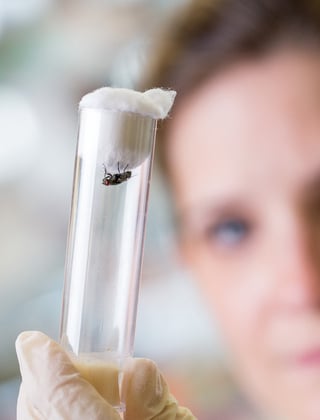AWI smart tags for remote detection of predation and disease

A three-year project co-funded by AWI has highlighted the enormous potential of on-animal sensors, including the AWI smart tag, to (1) indicate the presence of wild dogs around sheep and (2) detect the early incidence of health issues in sheep. The ultimate potential and benefit will be when real-time alerts are able to be generated to enable woolgrowers to intervene.
AWI smart tags deployed on the ears of sheep at ‘Dunraven’, near Barcaldine in Queensland.
A three-year project co-funded by AWI has highlighted the enormous potential of on-animal sensors, including the AWI smart tag, to (1) indicate the presence of wild dogs around sheep and (2) detect the early incidence of health issues in sheep. The ultimate potential and benefit will be when real-time alerts are able to be generated to enable woolgrowers to intervene.
There is a growing interest amongst woolgrowers in the potential of on-animal sensors to remotely provide them with key real-time information on the behaviour and location of their sheep.
The provision of such information has several key applications for woolgrowers. These include detecting a potential or real predation event by wild dogs, and identifying more subtle sheep behaviour changes associated with the development of disease (eg high worm burden) – both of which can have significant production, profitability and animal welfare implications.
The AWI smart tag is one of the first potential options of on-animal sensors for woolgrowers, but research is required before commercialisation to make it practical for the behaviour of extensively managed sheep and real world on-farm situations, as well as provide reliable real-time alerts to woolgrowers.
A three-year project undertaken by CQUniversity with funding from AWI and an Advance Queensland Industry Research Fellowship to test the AWI smart ear tags has recently been completed. Specifically:
- the AWI smart tag was evaluated with several attachment methods (ear, collar and halter)
- connectivity and terrain considerations for commercial deployments were highlighted
- basic behavioural models and algorithms were improved; and
- the ability to use this information to deliver key alerts to producers, for early intervention measures associated with the detection of predation and disease (specifically Barber’s pole worm infections), were highlighted.
The AWI smart tags were tested at ‘Dunraven’, a large commercial wool-growing property run by Paul Doneley near Barcaldine in western Queensland. Testing involved behavioural observations of sheep to determine, for instance, the accuracy and sensitivity of the tag to detect standing, grazing and walking behaviours.

Paul Doneley and family of ‘Dunraven’, who appreciate the potential of on-animal sensors.
Remote predation detection
The research results indicated that the presence of a wild dog influenced the daily behaviours of sheep by increasing their daily distance travelled and changing their activity profile. Additionally, accelerometer-based detection of wild dog interactions was found to be feasible and current data processing undertaken on the AWI smart tag could be adapted to provide future alerts.
These results highlight the potential for on-animal sensors to be used as a monitoring tool for sheep flocks directly impacted by wild dogs, although further work is needed to determine the applicability of these results to other sheep production regions of Australia.
Remote disease detection
The research results highlight that there are differences in the daily breakdown of behaviour between groups of sheep at varying intensities of Barber’s pole worm infections. Overall, infected animals were shown to graze less and stand more than control animals, particularly at worm burdens between 250 and 1000 epg. These results suggest that accelerometer sensors may be able to detect behavioural changes associated with Barber’s pole worm infections and highlights the potential use of these sensors to alert producers to an outbreak.
However, individual variability had a significant impact on the ability to detect overall patterns in flock behaviours. To address this, the researchers say on-animal sensors should be applied to individual sheep as early as possible. This will allow for individual baseline data to be collected prior to clinical disease. This baseline data could then be used to examine changes in an individual’s behaviour over time, rather than in comparison to the flock.
Benefits for woolgrowers and wool industry
“There are numerous tangible benefits for woolgrowers that have been delivered through this project or will be realised when the AWI smart tag is commercially available,” said AWI Program Manager Agri-Technology, Carolina Diaz.
“From an economic perspective, reduction in sheep loss from predation and disease can improve farm profitability and sustainability. Additionally, the potential reduction in associated stress for woolgrowers is another considerable benefit of this research,” Carolina said.
“Animal welfare will also be improved through increased monitoring, management and intervention. Furthermore, social benefits can be achieved by improving social license and consumer perceptions of how animals are treated on-farm, including an increase in the frequency of monitoring.
“Future environmental benefits include targeted pest control activities, targeted or reduced use of chemicals for disease control, and improved paddock management.”
Several other AWI-funded projects are investigating other applications of the AWI smart tag, including improving reproductive and grazing management.
This article appeared in the June 2022 edition of AWI’s Beyond the Bale magazine. Reproduction of the article is encouraged.















